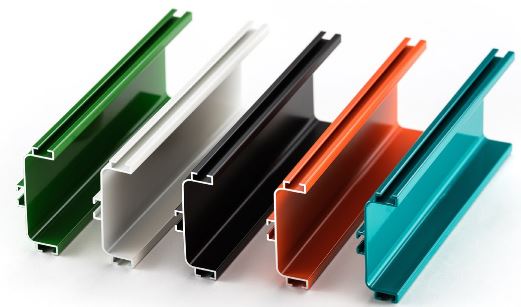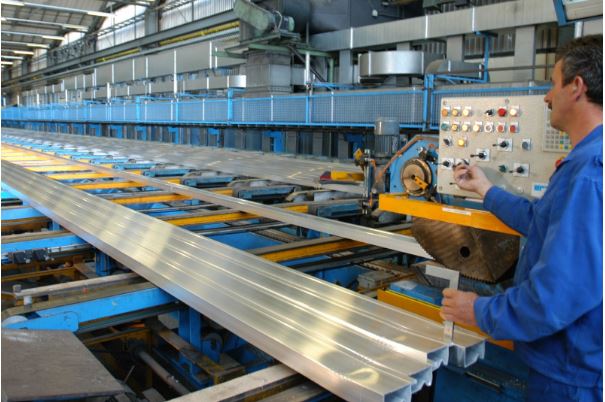With the recent advancements in technology and manufacturing processes, manufacturers can produce many products and conveniences in specific custom shapes using custom extrusion.
These products and items include straws, PVC pipes, rain gutters, and more. If you’re genuinely interested to better understand the manufacturing process behind these widely known products and how they work, read through our informative article and broaden your horizons on custom extrusion.

What Is Custom Extrusion?
Extrusion is the manufacturing technique of forming products by pushing materials like aluminum or plastic onto a mold to create a particular shape. Consequently, custom extrusion is an extrusion that’s custom-made to form specific shapes and materials.
The manufacturing process involves forcing base plastic, metal, or other material through a pre-shaped die to produce items with a specific shape and profile. As the material passes through the die, it’s shape changes to reflect the die’s shape.
As a rule, the best material for custom extrusion is aluminum because it resists corrosion. Furthermore, when you take advantage of aluminum with another kind of metal, you will end up with something that’s called galvanic corrosion.
Extrusion can be done continuously for a long material or semi-continuous for the manufacturing of a larger quantity. Besides aluminum and plastic, some of the other standard materials used for extrusion include concrete, clay, ceramics, polymers, etc.Custom extrusions are usually done by professional plastic and aluminum extrusion services that can transform high-quality plastics and aluminum alloys into specified shapes to meet desired specifications.

Read along to find out the different types of custom extrusion and their best-known industrial applications.
Types Of Custom Extrusion
The four primary types of extrusion that you can customize to fabricate custom extrusions include cold, hot, friction and micro extrusion.
Cold Extrusion
During cold extrusion, the material is forced through the die while at or near room temperature. The material used in cold extrusions usually comes in slugs poured into the die’s feeder, where pressure joins them together to form a solid object in a new custom shape. Cold extrusion can be classified into the following processes:
- Lateral extrusion is usually used on liquids where the liquid material is pushed in an injection to fit the die.
- Forward extrusion which is fit for producing solid shapes.
- Backward extrusion which is generally used to produce hollow shapes.
Hot Extrusion
On the other hand, hot extrusion requires heating the material at very high temperatures and afterward forcing it within the die while in a molten phase. Highly depending on the type of material used, temperatures may range from 650-850 Fahrenheit for magnesium and up to 1,300 Fahrenheit for steel.
Using an adequate temperature is very important when performing hot extrusion because if the base material isn’t heated to its recrystallization temperature, it may struggle to move through the die. When the material is heated to the appropriate temperature, hot extrusion is an effective and accurate way to shape and reshape products and components.
Friction Extrusion
Invented by The Welding Institute in the UK and patented in 1991, friction extrusion was initially intended to produce homogenous microstructures and particle distributions in metal matrix composite materials.
The modern friction extrusion process involves the automatic twist of the billets or metal slugs based on the die’s position. As the die rotates, it creates heat from the metal-on-metal friction around the entry of the die. Consequently, the heat allows the metal to pass through the die more quickly and form the new shape.
Friction extrusion is a highly effective and efficient manufacturing process gaining popularity among professional manufacturers from all industries.
Micro Extrusion
At last, micro extrusion is the newest type of extrusion technique characterized by its ability to produce small and micro-sized objects because the cross-section of the die supports base material measuring just 1 millimeter. Due to the highly technical nature of creating such tiny dies that can withstand a lot of pressure, micro extrusion hasn’t gained the same level of popularity as its friction counterpart.
Industrial Applications Of Custom Extrusion
A broad variety of products in many shapes and sizes can be manufactured using custom extrusion. Products made with custom extrusion are being massively used in piping systems, home appliances, and electronic devices. Here are a couple of industries where custom extrusion is having a big impact and the technique’s industrial applications.
Automotive Industry
Many products are manufactured by utilizing custom extrusion in the automotive industry, including car doors and window frames. In most cases, manufacturers work with aluminum custom extrusions because of the properties of this noble metal. Aluminum reduces the total weight of the vehicle without compromising any safety protocols.

The full efficiency of this manufacturing technique for automotive giants lies in the possibility of allowing car producers to manufacture vast quantities of car parts for lower costs than with other manufacturing techniques while limiting the harmful emissions to the atmosphere created by different metals.
Construction Industry
Custom aluminum extrusion is considered an essential feature of the construction industry because of its structural integrity and cost benefits. Since aluminum extrusion allows the creation of complex shapes on long continuous spaces, it’s extensively exploited for many different construction materials and applications.
Lightweight extruded aluminum paneling and guide rails are usual for shed, trailer, and furniture construction. Besides, the manufacturing method is frequently employed to manufacture lighting fixtures, stairwells, elevator shafts, and many more.
The possibility of reusing and recycling the material is an additional benefit that aluminum extrusion offers to environmentally-conscious manufacturers and architects.
Other Industries
Other industries that heavily rely on custom extrusion include:
- Food production and service industries
- Consumer goods manufacturing
- Transportation industries
- Electronics and computers industries
- Military and defense industries
- Agriculture industry
- Municipal and industrial LED lighting industry
- Hospitality industry
Final Words
Manufacturing is now more accessible and efficient than ever, not to mention the cost-saving aspects that get better by the day. One of the most used and extensively employed manufacturing techniques is the one that we explained above – the extrusion technique.
If you happen to work in the manufacturing industry, don’t hesitate to book a meeting with an experienced manufacturing engineer and explore the possibilities that custom extrusion can offer to your business. Trust us; extrusions can do wonders for your business!
Video – What is Customization?
Interesting related article: “What is Manufacturing?“

